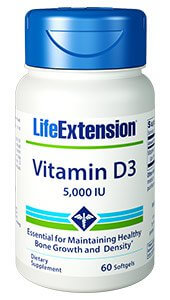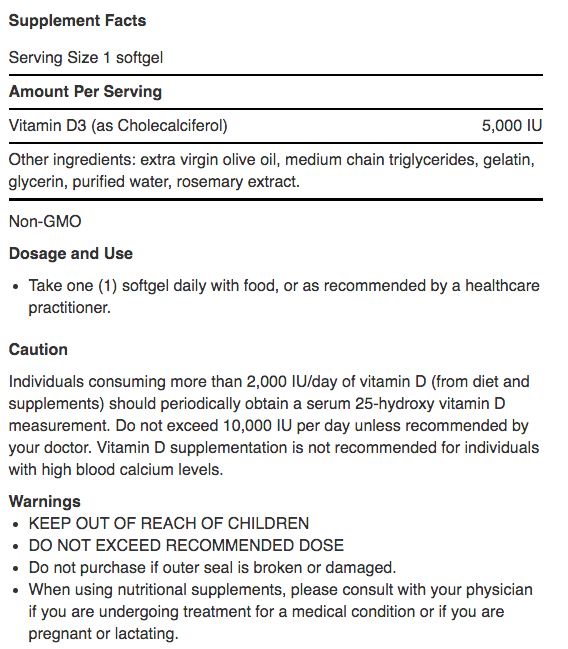Life Extension Vitamin D3 5000 IU 60 Softgels
Vitamin D has long provided significant support for healthy bone density.However, scientists have also validated the critical role that vitamin D plays in regulating healthy cell division and differentiation, and its profound effects on human immunity. These findings link a deficiency of vitamin D to a host of common age-related problems.

Vitamin D3 can be synthesized by humans in the skin upon exposure to ultraviolet-B (UVB) radiation from sunlight. But, due to the winter season, weather conditions, and sun block, the body’s ability to produce optimal vitamin D levels may be inhibited. These factors point to the value of taking a daily vitamin D supplement.
Vitamin D has long provided significant support for healthy bone density. However, scientists have also validated the critical role that vitamin D plays in regulating healthy cell division and differentiation, and its profound effects on human immunity. These findings link a deficiency of vitamin D to a host of common age-related problems. The current RDA is only 600 IU. As a result of startling evidence of a widespread vitamin D deficiency, prominent nutritional scientists are calling on Americans to increase their vitamin D intake to 1,000 IU per day and higher. Currently, most experts in the field believe that intakes of between 1,000 and 10,000 IU for adults will lead to serum 25(OH)D levels above those indicative of vitamin D deficient levels, at approximately 80 nmol/L or 32 ng/mL. Life Extension recommends that healthy adults supplement each day with at least 2,000 IU of vitamin D. Elderly adults may benefit from higher doses such as 5,000 IU daily up to 10,000 IU daily. The objective of taking a vitamin D supplement is to achieve an optimal 25-hydroxy vitamin D blood level of between 50-80 ng/mL. Vitamin D in the amount of 2,000 IU is contained in the multi-nutrient Life Extension Mix™ and the multivitamin Two-Per-Day Tablets. A vitamin D blood test can help you determine the additional amount of vitamin D you may need to supplement to achieve an optimal level. For those already obtaining 1,000-3,000 IU of vitamin D in their multinutrient formulas, this 5,000 IU potency is what many need to achieve optimal vitamin D blood levels.More Info on Life Extension Vitamin D3 5000 IU 60 Softgels
† Statements on this website have not been evaluated by the Food and Drug Administration. These products are not intended to diagnose, treat, cure, or prevent any disease, but rather are dietary supplements intended solely for nutritional use.

